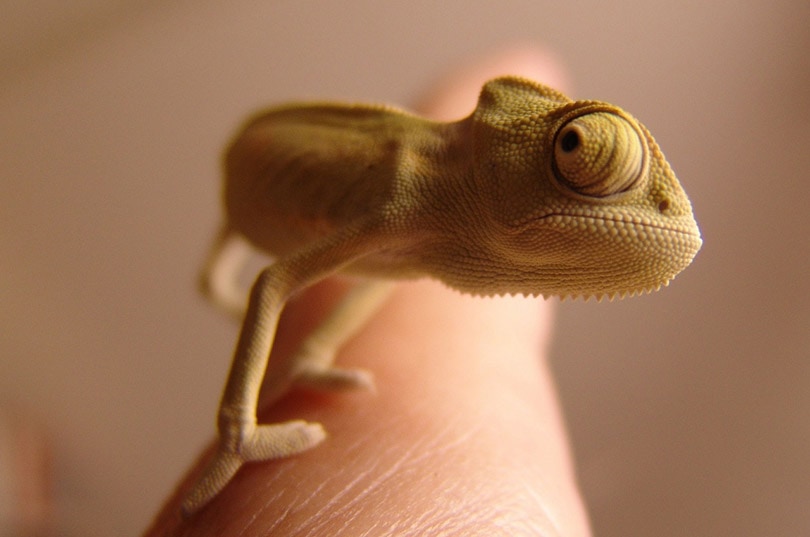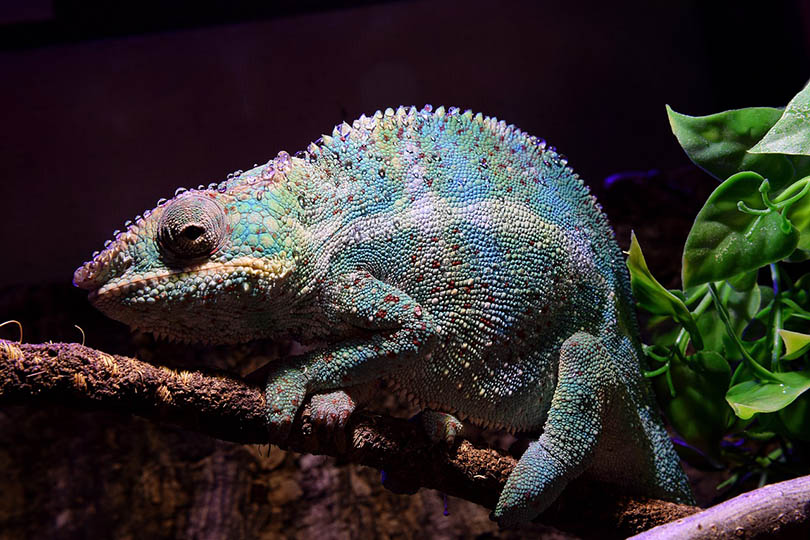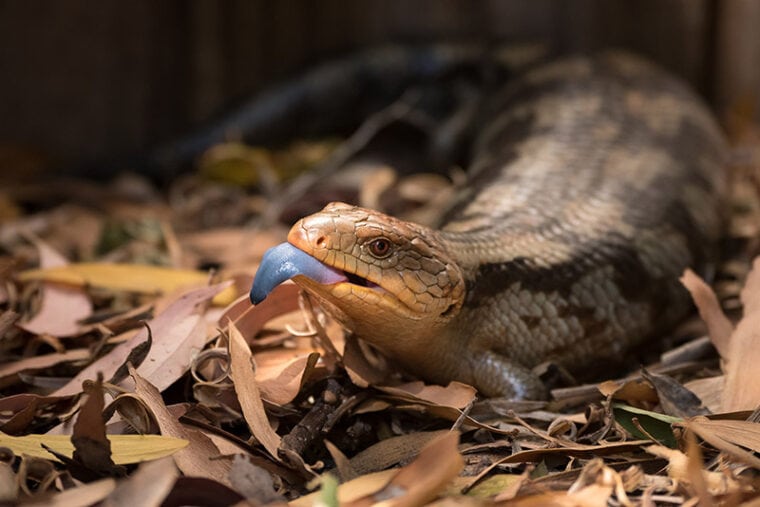
Reptiles are becoming more and more popular in America because they have long lifespans and are relatively easy to raise. The Blue Tongued Skink is an amazing animal that, as you might have guessed, has a bright blue tongue, but there are plenty of other interesting facts you might not know. Keep reading while we take a deep dive to learn as many facts about the Blue Tongued Skink as we can.
Quick Facts about Blue Tongued Skinks
| Species Name: | T. gigas |
| Common Name: | Blue Tongue Skink |
| Care Level: | Moderate |
| Lifespan: | 15 – 18 years |
| Adult Size: | 18 – 24 inches |
| Diet: | Meat, vegetables, insects, fruit |
| Minimum Tank Size: | 20-gallon tank |
| Temperature & Humidity: | 20% – 40% humidity, 70 – 80 degrees |
Do Blue Tongued Skinks Make Good Pets?

Yes, the Blue Tongue Skink will make a great pet and is suitable for children. Besides its attractive blue tongue, it’s great because it doesn’t mind when you handle them, so you won’t have to teach your children to stay away. In addition, it gets quite large and has a long lifespan. Once you get the habitat going, it’s inexpensive and easy to raise these pets. It’s also quite intelligent.
The 8 Varieties of Blue Tongue Skinks
There are several varieties of the Blue Tongue Skink, and they all have slightly different appearances.
1. Adelaide Pygmy Blue Tongue Skink
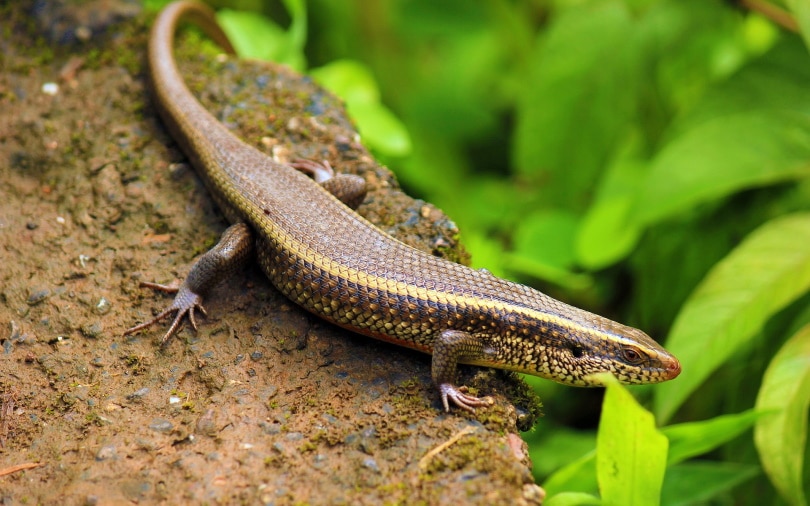
You can find this Skink in South Australia. Scientists believed that it was extinct until the 1990s. Today there are breeding programs to help bring back the population. It has a mottled color pattern of white, brown, black, brown, and grey. It typically grows to 3.5 – 6 inches.
2. Blotched Blue Tongue Skink

The Blotched Blue Tongued Skink is usually a lighter color with darker spots, but the pattern can reverse, causing the body to be dark with light spots. It’s one of the largest varieties and can reach 20 inches or more.
3. Centralian Blue Tongued Skink

The Centralian Blue Tongued Skink is another larger Skink that can reach 17 inches or more and has an almost obese appearance. It’s often bright yellow, so it’s one of the easier Skins to identify.
4. Indonesian Blue Tongue Skink

The Indonesian Blue Tongue Skink only grows to about 11 inches but has a significant tail that can increase the total size of the animal to 20 inches. It has a yellow, orange body with black markings that can be bands or spots.
5. Irian Jaya Blue Tongue Skink
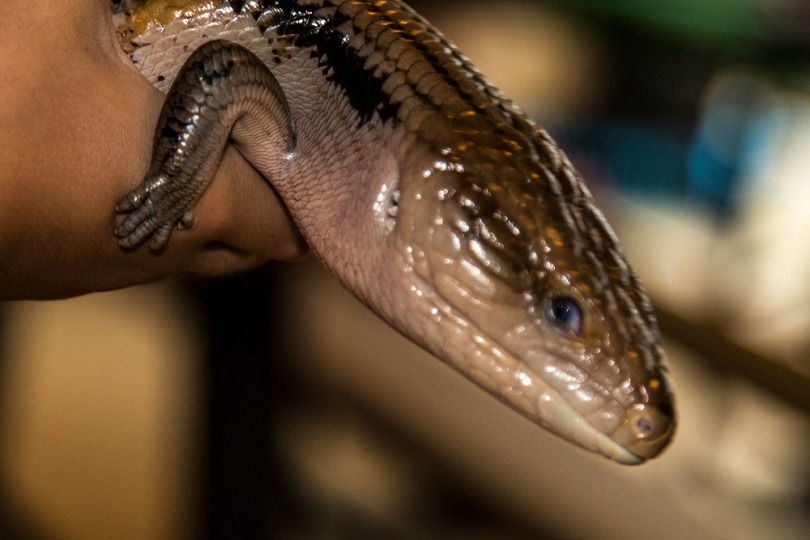
The Irian Jaya Blue Tongue Skink is another large reptile that can exceed 20 inches, but it’s extremely rare and maybe a hybrid. It can be any of several colors but is most often brown.
6. Shingleback Blue Tongued Skink

The Shingleback is the warrior of the Skink varieties. It has armored scales and a tough and rugged appearance. It’s usually dark brown or black, but you can find them in various colors, and it’s usually a little over seven inches long. It’s a hardy animal that stores fat in its tail, so it can’t detach it like the other varieties.
7. Australian Blue Tongued Skink

The Australian Blue Tongued Skink can grow to reach 15 inches. It’s usually brown, orange, black, and grey, but can be found in other colors too, including light blue.
8. Western Blue Tongued Skink

The Western Blue Tongued Skink has a wide range but is a threatened species in many areas, so it may not be easy to find one. It can grow to 15 or 20 inches and is slow-moving. It has a light-colored body with wide bands of brown.
How to Take Care of Blue Tongued Skinks
| Tank Recommendations | |
| Tank Type: | 20-gallon glass vivarium |
| Lighting: | Heat lamps providing UVB |
| Heating: | Heat lamps to keep the temperature above 70 degrees |
| Best Substrate: | Based on environment |
Habitat, Tank Conditions & Setup
Some Skink varieties are smaller, but most will require a larger tank at least four feet long, two feet wide, and at least one foot deep to provide your reptile with enough space t move around. In addition, it will need a screened top, so it doesn’t escape, and a front opening will help you access the reptile. You can use glass or wood, as both will work well.

Lighting
You will need to use heat lamps to increase the temperature in your terrarium to more than 70 degrees. We recommend a brand that will provide your pet with important UVB light, which will give your pet the important nutrients it usually gets from the sun. However, you will need to change the bulbs frequently because they stop producing UVB light long before burning out.
Temperature
As we mentioned earlier, you will need to keep the temperature in your terrarium between 70 – 80 degrees. Heat lamps are the best way to increase the temperature, and they also provide your pet with a basking spot that it will enjoy.
Humidity
Humidity will need to stay between 40% and 60%. It will need to remain on the higher side when shedding the skin. It also helps keep your Skink hydrated. An ordinary spray bottle will help you control humidity levels. Using the spray bottle to mist the reptile every few hours while keeping a close eye on an ergometer will produce the best results.
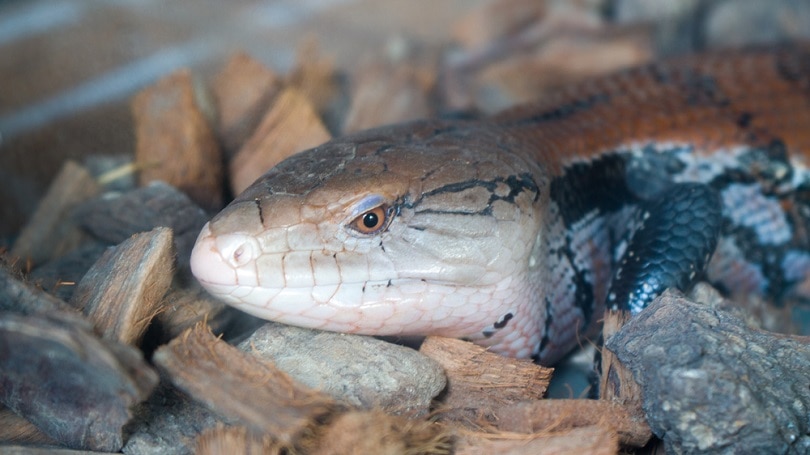
Substrate
The substrate you use will depend on the type of Skink you have. For example, desert Sinks will want a dryer, sandier substrate, while those from wetter areas will do better with a mulch. Most Skinks like to dig, so you will want to make sure the substrate is several inches thick.
Feeding Your Blue Tongued Skink
Most Blue Tongued Skinks have a similar diet to other reptiles. It will primarily eat insects like crickets, waxworms, snails, and more. They will also eat fruits and vegetables and are no too picky about what they eat when they are hungry. Younger and still developing Blue Tongued Skinks should eat plenty of insects to build strong muscle, but once they are fully grown, you can feed them a diet that consists of as much as 40% fruits and vegetables.
| Diet Summary | |
| Fruits: | 30% of diet |
| Insects: | 70% of diet |
| Meat: | 5% of diet – small rodents |
| Supplements Required: | Calcium Vitamin D3 |
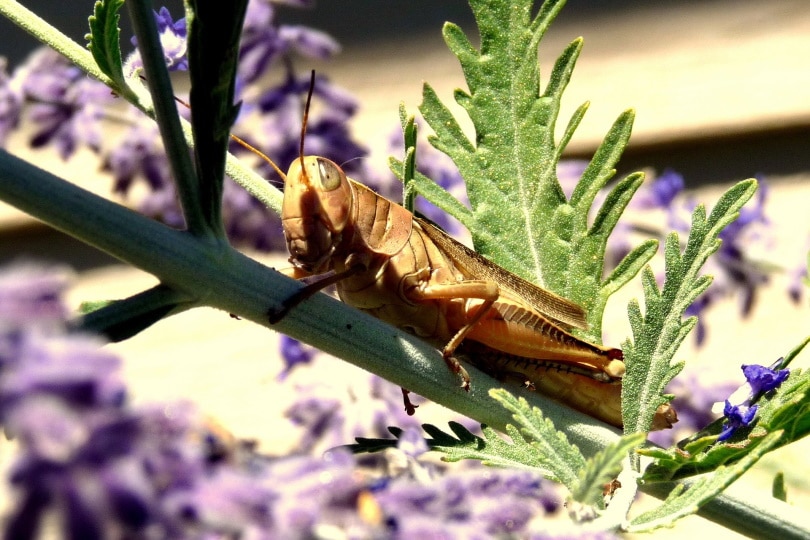
Keeping Your Blue Tongue Skink Healthy
The Blue Tongued Skink is relatively easy to keep healthy as long as the habitat is large enough and the temperature and humidity are correct. Lower humidity can cause the skin to stick and be difficult to remove, especially around the eyes.
Common Health Issues
Parasites
Parasites are a common problem for the Blue Tongued Skink. It usually gets the parasites by eating food that contains them. Wild-caught food is the easiest way to pass parasites to your pet accidentally, and we recommend captive-bred food when possible.
Metabolic Bone Disease
Another big problem for many captive reptiles, including the Blue Tongued Skink, is Metabolic Bone Disease (MBD). MBD occurs when your reptile does not get enough calcium in its diet. It can cause your pet’s bones to become soft and brittle and may even result in the immobilization of your pet. Dusting the insects and other food you serve your pet with a calcium and Vitamin D3 supplement will help prevent the onset of this disease.
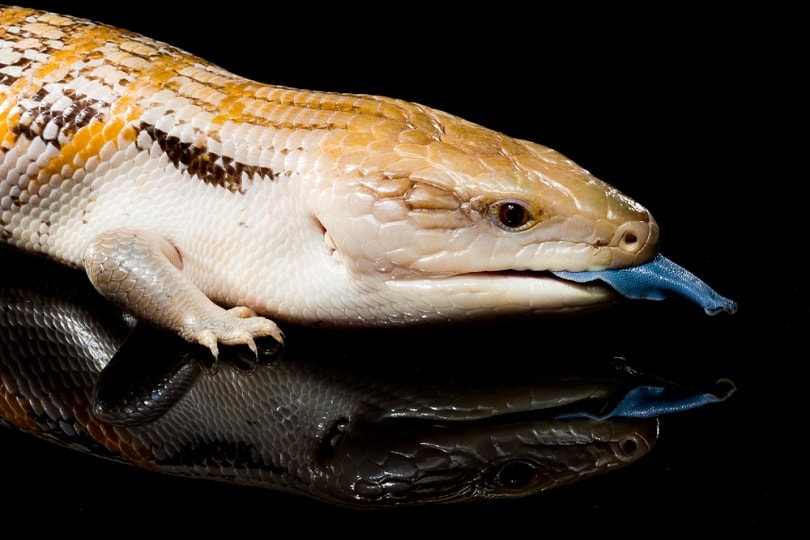
Lifespan
You can expect your Blue Tongued Skink to live between 15 and 18 years if you are able to maintain the proper habitat. These reptiles are quite hardy and have few health problems as long as you provide plenty of calcium.
Breeding
Breeding your Blue Tongued Skink is as easy as placing the male and female in the terrarium during the spring. The mating ritual can appear violent, and the male can claw and bite the female to help get into position. However, if you feel like there could be an injury, it’s best to separate them and try again with a different mate. If mating occurs and you notice the female getting larger in a few weeks, the breeding was successful, and she will give birth to a live baby.
Are Blue Tongued Skinks Friendly? Our Handling Advice
Yes, the Blue Tongued Skink is quite friendly and doesn’t mind when you handle them. In fact, frequent handling can help them recognize you, and they will become more relaxed and less likely to take a defensive posture.

Shedding & Brumation: What to Expect
Your Blue Tongued Skink can shed quite frequently, especially while it is still growing. If you notice your pet rubbing on branches or rough surfaces, it’s likely about ready to start shedding. We recommend increasing the humidity with more frequent spraying to help the skin come off easier. A water dish will allow your pet to submerge itself for even more relief.
How Much Do Blue Tongued Skinks Cost?
You can expect to pay between $150 and $2,000 for your Blue Tongued Skink, depending on the breed you choose. The Indonesian and Australian Blue Tongued Skinks are much more affordable than the Centralian or Shingleback varieties. However, breeders are getting much better at creating captive bred reptiles, and these pieces are likely to fall in the next few years.

Care Guide Summary
 Final Thoughts
Final Thoughts
The Blue Tongued Skink is a fascinating animal that makes a great pet for anyone interested in raising reptiles. It enjoys being handled and is usually quite calm, so it’s a great choice for children. It’s also low maintenance once you have the habitat set up, and it will only require food and heat lamp replacements to live a long life.
We hope you have enjoyed our look into these interesting reptiles and have found the answers you need. If we have convinced you to get one for your home, please share this guide to the Blue Tonged Skink on Facebook and Twitter.
Featured Image Credit: james_stone76, Shutterstock




